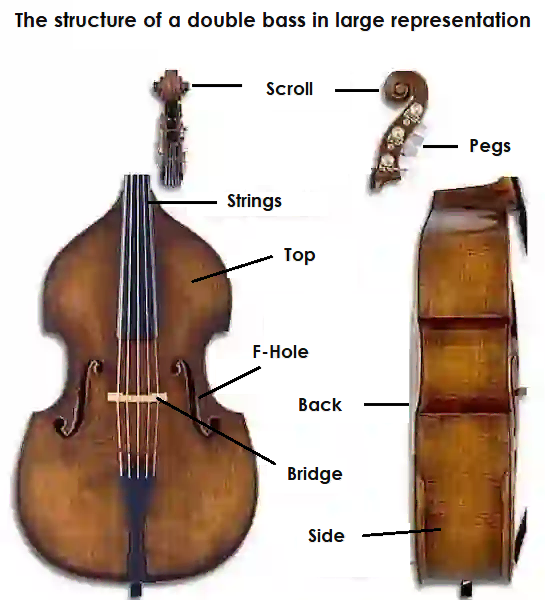Construction and function » double bass » Philipp Dangas
Construction and function of the double bass
The double bass and its structural properties are basically those of the instruments of the violin family, violin, viola. However, it has some peculiarities caused by its low scale position. These result primarily from the fact that here, even less than with the cello, it was possible to increase the dimensions of the instrument corresponding to the deepening of the scale.
Therefore, the frames had to be increased extraordinarily. For reasons of practical handling of the instrument, the upper part of the body has retained the shape of the viols. The back is relatively flat and its upper part slopes down towards the neck, so that the body is somewhat flatter here.
The three or, in the case of a five-string double bass, four low strings are wound. In order to be able to regulate their strong tension more easily, the pegs are provided with a gear wheel . When playing, the instrument is supported on the ground with a spike. Due to its considerable size of a little more than 2 meters from the snail to the endpin, the double bass must be played standing up.
As with other stringed instruments, the fingering technique of the double bass is based on the system of individual positions, and a distinction is made between the 1st and 7th positions, which are normally fingered. The thumb attachment is applied above the 7th position and 5 more thumb positions follow here. The flageolet is also used with the double bass, close to the general principles of string instruments.
The notation of the contrabass flageolet, however, differs from the notation otherwise generally used for the double bass, not transposing, but made according to the actual sound. In the general notation of the double bass, the bass clef is usually used. With regard to bowing technique (dynamics, articulation, types of bowing), what was said about the violin applies.
Table summary of the components of the strings
This table shows the basic components of the strings briefly described. In fact the saddle. The fretboard, strings and bridge.

Internal search function
| Name | Value | Delete |
|---|